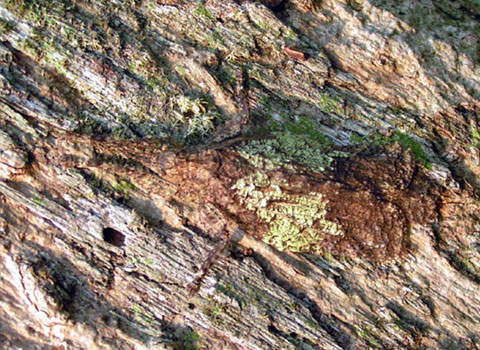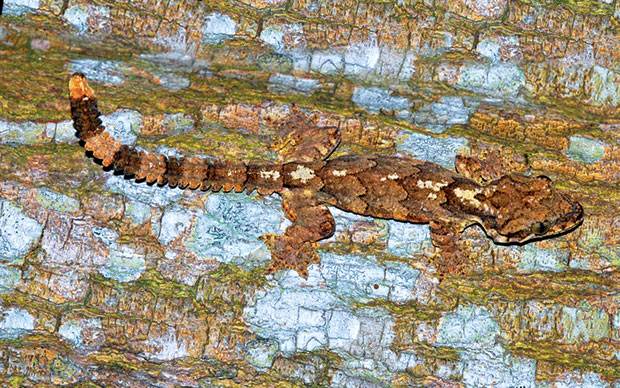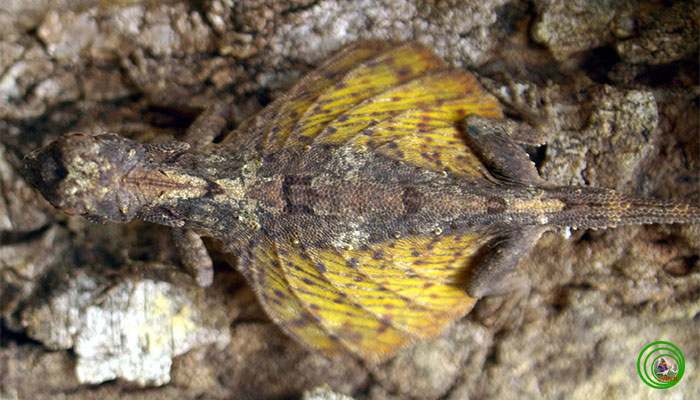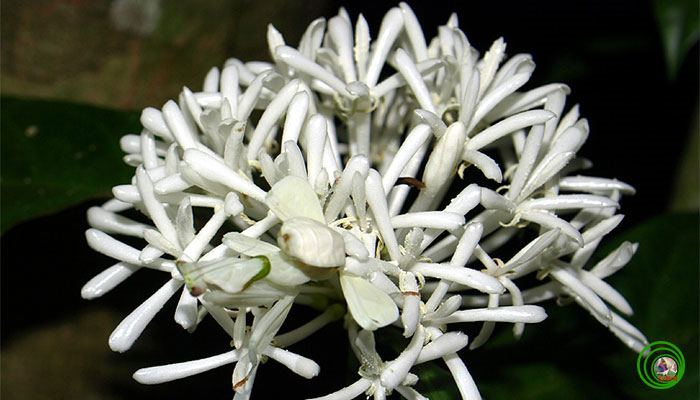The super 'invisibility'
The change in color and appearance is similar to those in the surrounding environment, to avoid the enemy is a wonderful response that nature gives to animals.
>>>Beautiful photos: The masters disguise in the natural world

Settling species Tettigonidae. This is a typical example of the possibility of camouflage in wild nature in the struggle to survive and maintain the race. If viewers look directly into this photo, it will be difficult to recognize an insect belonging to the family close to Tettigonidae or just a decaying tree trunk for five months in Bu Gia Map National Park. This insect has a good camouflage ability that most of its enemies cannot detect, so it has a chance to escape. (Photo: Dang Viet Dai)

Ptychozoon lionotum lobster tail. At a distance of 2m, even those with the best eyes cannot recognize the silver and the same age of the tree and where the geckos are. It is because of this invisibility ability that the ability to hunt is known as the killer in the rain forest. It only needs to lie in place waiting for prey to "submit the network" as the preferred hunting method that this species often applies. This is a rare and rare species of jellyfish when it is photographed in nature. (Photo: Le Khac Quyet)

Spotted lizard Draco maculatus. In addition to being able to fly from tree to tree to earn food and find a partner during the mating season, its "stealth" ability is also remarkable. This species is quite popular in forests that are well protected and they often choose big and old trees to live and hide when threatened. (Photo: Nguyen Thi Lien Thuong)

Taking advantage of the aromatic white flowers to attract insects to extract bile and pollination, the white mantis of Mantidae also knows how to "bloom" seasonally to find food. This predator does not have to work hard like other species, just wait for his meal quietly. It is hard to escape the sharp sword and the cold bite when the prey perceives the threat, there is no chance of escaping. (Photo: Phung My Trung)

Kallima inachus dry leaf. It can suck pistils and enjoy a delicious breakfast even if lizards, insect-eating birds or even researchers can hardly recognize it at a distance of 4m and the dry leaf will fly when they threatened. In addition to the ability to camouflage dry leaf butter is also the most impressive picture in the rain forests of Vietnam. (Photo: Phung My Trung)

Mosquito-backed mosquito Caprimulgus affinis. This nocturnal bird usually hides in the grasses right next to the road or small shrubs. However, their camouflage makes even the most mischievous weasels not realize it. (Photo: Swiss Winnasis)

Bo que Diapheromera sp. is an ancient insect found in the late Triassic era, one of the insects that is of great interest to biologists. This species is typical of evolution by natural selection that still exists today. Their "invisibility" ability is remarkable because only when this "moving tree" moves to feed or flee the enemy, do we have a chance to discover that it is a living creature. (Photo: Phung My Trung)
- Harry Potter's invisibility cloak can become a reality
- The US is producing thousands of invisibility cloaks
- The world's first invisibility cloak
- Limit physics to prevent invisibility fabric technology
- Show the first ultra-thin invisibility shirt
- Decode the 'invisibility' costume worth half a billion
- Invisibility cloaks are coming true
- America presents 'invisibility cloak' before sound waves
- Strange technology: Austrian 'stealth' time
- Technology made invisibility cloak with invisible beam
- Invisibility cloak: Go swimming with sharks ... not afraid!
- Why is invisibility cloak hard to come true?
 The 11 most unique public toilets in the world
The 11 most unique public toilets in the world Explore the ghost town in Namibia
Explore the ghost town in Namibia Rare historical moments are 'colored', giving us a clearer view of the past
Rare historical moments are 'colored', giving us a clearer view of the past The world famous ghost ship
The world famous ghost ship